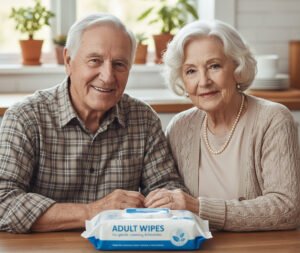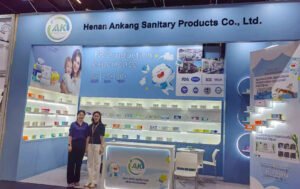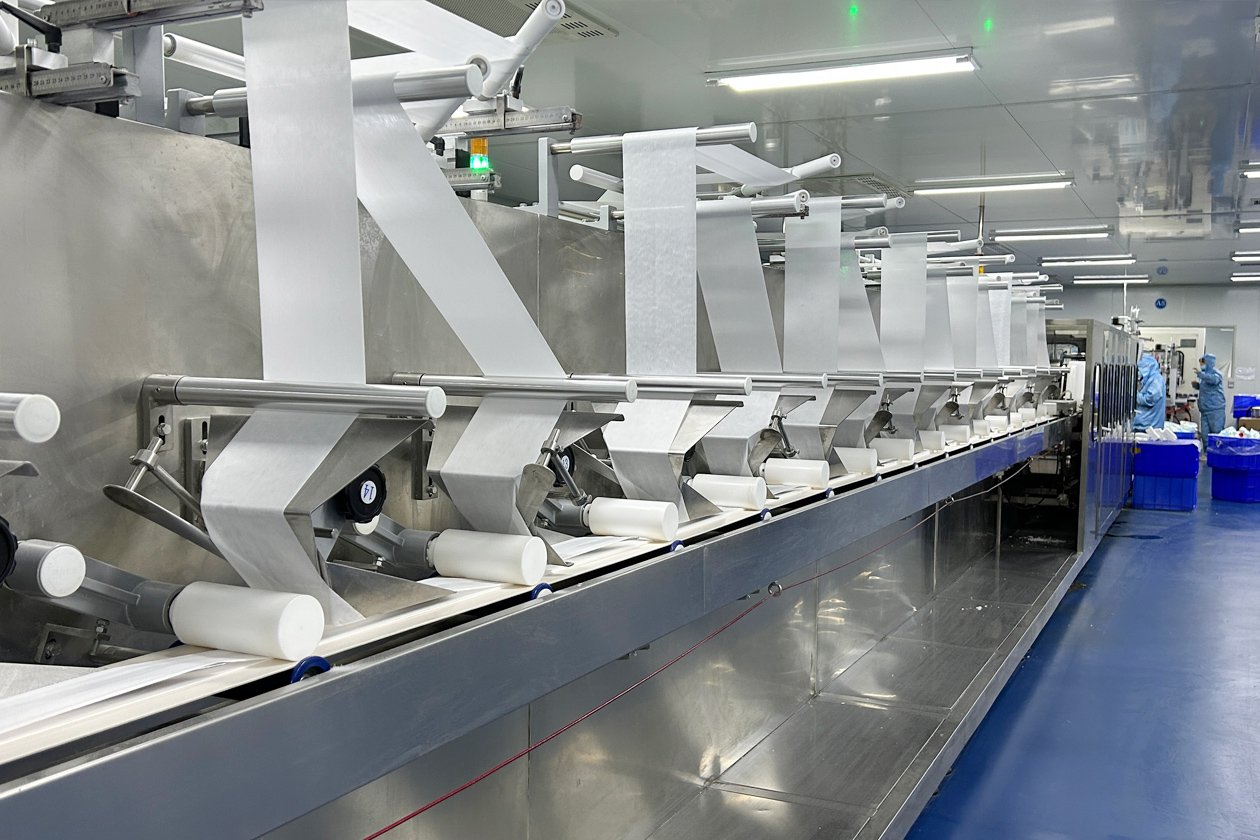Choosing the right wet wipe can feel like navigating a maze, especially with so many options promising different benefits. From soothing baby bottoms to tackling tough household grime, wet wipes have become an indispensable part of our daily lives. But have you ever stopped to consider what these convenient cloths are actually made of? The materials used in wet wipes play a crucial role in their performance, feel, and, increasingly, their environmental impact. Let’s dive deep into the fascinating world of wet wipe materials, uncovering what you need to know to make informed choices.
The Foundation: Non-Woven Fabrics
At the heart of almost every wet wipe is a “non-woven fabric.” Unlike traditional textiles that are woven or knitted, non-wovens are created by bonding fibers together through mechanical, chemical, or thermal processes.1 Think of it like a tangled web of fibers pressed into a sheet, rather than individual threads meticulously interlaced. This unique construction is what gives wet wipes their characteristic softness, absorbency, and strength.
The most common method for producing wet wipe non-wovens is called “spunlace.” In this process, high-pressure water jets are used to entangle and bond the fibers, resulting in a fabric that’s remarkably soft, durable, and highly absorbent.2 It’s a bit like using water to create a really strong, yet gentle, net for cleaning. Other methods like airlaid and meltblown are also used, each lending different properties to the final product. Airlaid fabrics are lightweight and absorbent, often found in cleaning wipes, while meltblown fabrics, with their fine fibers, are excellent for filtration, making them suitable for disinfectant wipes.
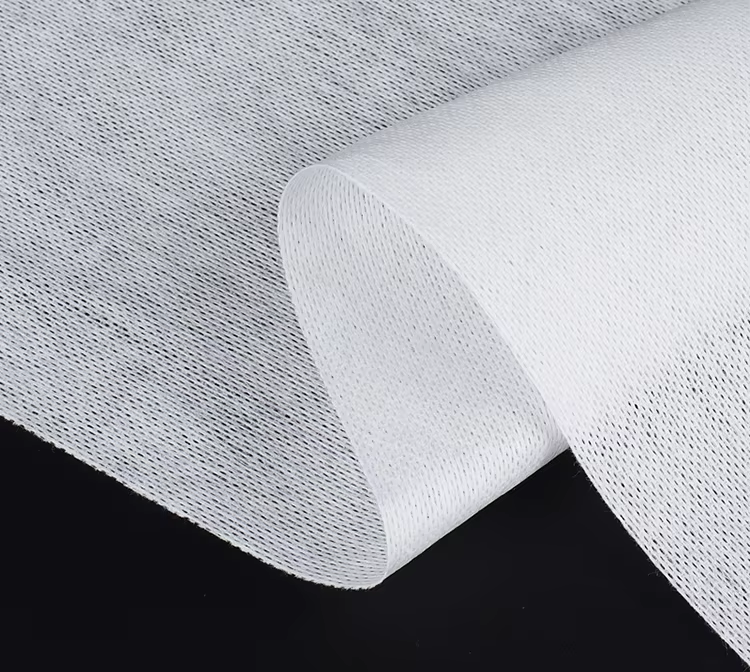
The Fiber Showdown: Natural vs. Synthetic
Now that we understand the basic construction, let’s talk about the stars of the show: the fibers themselves. Wet wipe materials generally fall into two broad categories: natural and synthetic. Each has its own set of advantages and disadvantages that influence everything from the wipe’s feel to its environmental footprint.
Synthetic Superstars: Polyester and Polypropylene
For a long time, synthetic fibers like polyester (PET) and polypropylene (PP) dominated the wet wipe market. Why? Because they offer a compelling combination of durability, strength, and cost-effectiveness. These are the workhorses of the wet wipe world, providing excellent tear resistance and the ability to hold up to vigorous scrubbing.
Imagine trying to clean a sticky mess with a wipe that just falls apart in your hands – frustrating, right? That’s where synthetics shine. They offer that robust performance that many consumers expect. However, there’s a significant downside: environmental impact. Polyester and polypropylene are essentially plastics, derived from fossil fuels, and they don’t readily biodegrade.3 This means that once they’re used, they can linger in landfills for hundreds of years, contributing to plastic pollution.4 This is a crucial point to remember, especially as we become more conscious of our ecological footprint.
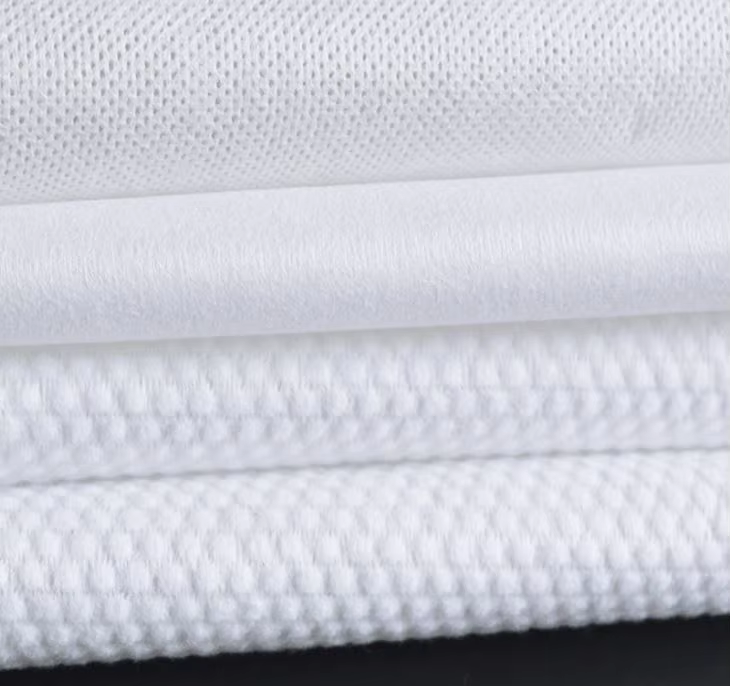
Natural Nurturers: Viscose, Cotton, Bamboo, and Wood Pulp
On the other side of the spectrum, we have natural fibers. These are derived from plants and are gaining immense popularity due to their softer feel and, most importantly, their biodegradability.
- Viscose (Rayon): Often simply called rayon, viscose is a regenerated cellulose fiber, meaning it starts as natural wood pulp but undergoes a chemical process to become a fiber.5 It’s incredibly soft, absorbent, and has a silky feel, making it a popular choice for baby wipes and personal care wipes. Viscose is also biodegradable, breaking down much faster than synthetic alternatives. However, the production process for traditional viscose can be chemically intensive, though more eco-friendly processes like those used for Lyocell (a type of rayon) are becoming more common.6
- Cotton: Ah, cotton – the classic choice for softness and breathability.7 Cotton wet wipes are renowned for their gentle touch, making them ideal for sensitive skin, especially for babies. Cotton is a natural, renewable resource and is inherently biodegradable.8 The challenge with cotton, however, can be its cost, which is typically higher than synthetic options, and its wet strength might not always match that of certain synthetics or blends. Organic cotton further enhances the eco-friendly appeal, ensuring no harsh pesticides are used in its cultivation.9
- Bamboo: A rising star in the sustainable wet wipe market, bamboo fibers offer a fantastic combination of softness, strength, and environmental benefits. Bamboo is an incredibly fast-growing and renewable resource, requiring minimal water and no pesticides to grow.10 Wipes made from bamboo are often naturally antibacterial, hypoallergenic, and, crucially, highly biodegradable.11 They offer a luxurious feel while being kind to the planet. It’s like getting the best of both worlds – a soft, durable wipe that you can feel good about using.
- Wood Pulp: This is the raw material for many natural and regenerated cellulose fibers.12 Wood pulp itself can be used in wet wipes, often blended with other fibers to enhance absorbency and provide a more eco-friendly option.13 Like other natural fibers, wood pulp is biodegradable.14 However, it’s essential to consider the sourcing of the wood pulp – sustainably managed forests are key to ensuring its environmental benefits.
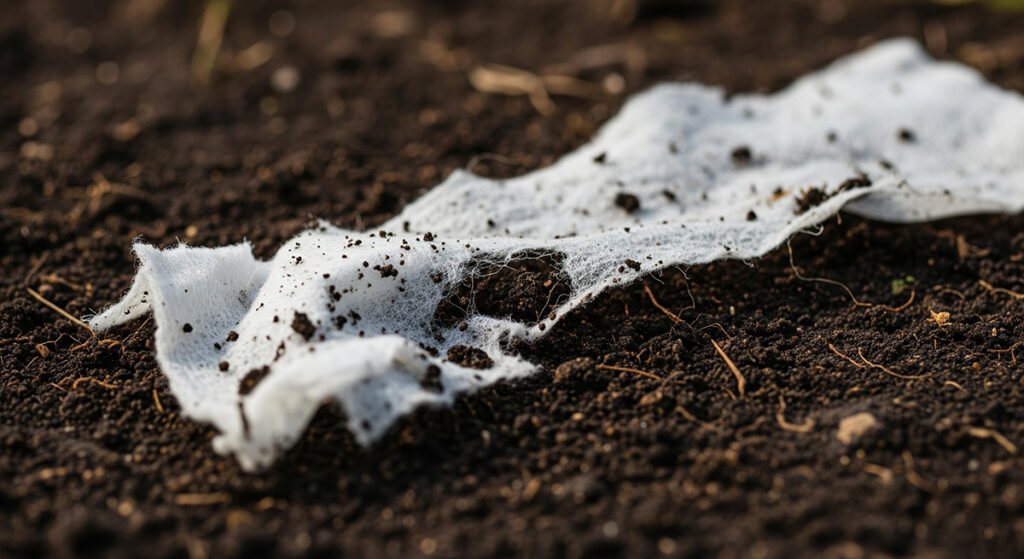
The Power of Blends: Why Mix and Match?
You’ll often find wet wipes that aren’t made of a single material but rather a blend of different fibers. Why do manufacturers do this? It’s all about optimizing performance, cost, and environmental impact.
Think of it like baking a cake. You wouldn’t just use flour; you’d add eggs for binding, sugar for sweetness, and butter for richness. Similarly, blending fibers allows manufacturers to combine the best attributes of each material. For example, a common blend might be viscose and polyester.15 The viscose provides softness and absorbency, while the polyester adds strength and durability, preventing the wipe from tearing easily during use. This creates a balanced wipe that performs well without being excessively expensive.
Another popular blend for eco-conscious consumers is wood pulp with viscose or even a small percentage of biodegradable synthetics like PLA (polylactic acid). These blends aim to maximize biodegradability while still ensuring the wipe performs its intended job effectively.
Beyond the Fibers: Flushability and Environmental Concerns
The choice of wet wipe material has significant implications beyond just how it feels in your hand. Two major concerns often come up: flushability and overall environmental impact.
The Flushable Fallacy (and the Truth About What Is Flushable)
This is a big one. Many of us have been guilty of flushing wet wipes, perhaps believing they’re just like toilet paper. However, most wet wipes, especially those containing synthetic fibers, do not break down in sewer systems like toilet paper does. They can clump together with fats and other discarded items, forming massive blockages known as “fatbergs” that cause significant plumbing issues for homeowners and municipal wastewater systems.16 This can lead to costly repairs and environmental damage.
So, what is truly flushable? Generally, flushable wipes are specifically engineered to disintegrate rapidly in water.17 These wipes are almost exclusively made from very short, natural cellulosic fibers like wood pulp or certain types of viscose that break apart quickly upon contact with water. Look for clear labeling that indicates compliance with flushability standards (like AS/NZS 5328:2022 in some regions). If a wipe doesn’t explicitly state it’s flushable and meet these standards, it belongs in the trash, not the toilet. It’s a simple act that can make a huge difference to our infrastructure and environment.
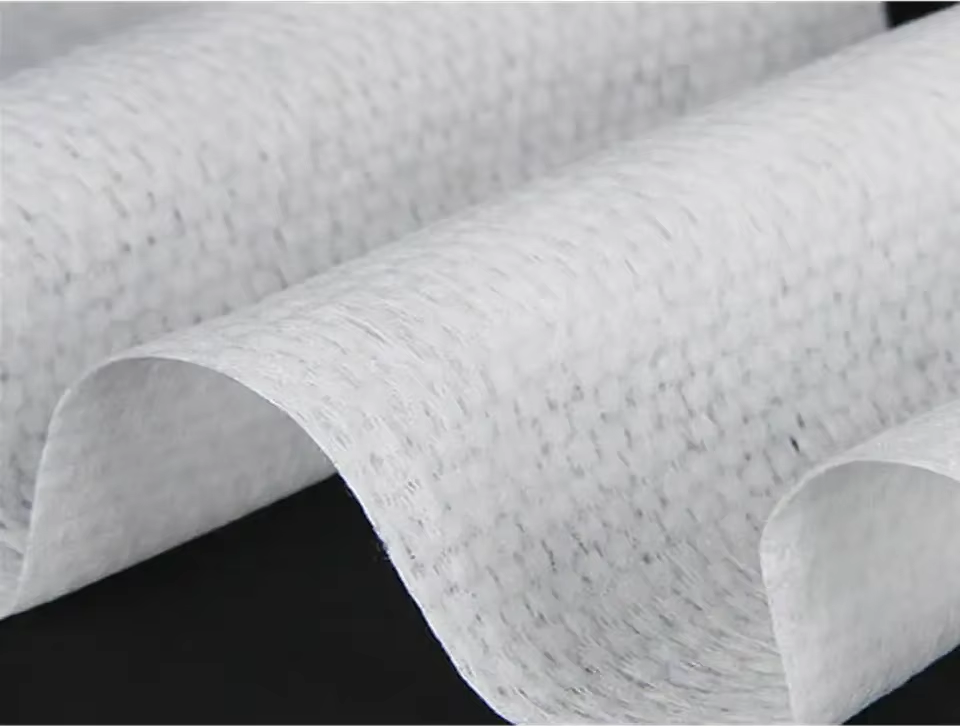
The Bigger Picture: Environmental Impact
Beyond flushability, the environmental impact of wet wipes extends to their entire lifecycle.
- Raw Material Sourcing: Are the natural fibers sourced from sustainably managed forests or farms? Are synthetic fibers made from recycled plastics?
- Manufacturing Process: How much water and energy are used in production? Are harmful chemicals involved?
- End-of-Life: Do the wipes biodegrade in a reasonable timeframe? Will they contribute to landfill waste or microplastic pollution?
The movement towards more sustainable wet wipe materials is growing. Brands are increasingly investing in plant-based fibers, recyclable packaging, and production processes that minimize environmental harm.18 As consumers, our choices send a powerful message to manufacturers. Opting for wipes made from biodegradable materials like bamboo, organic cotton, or sustainably sourced viscose can significantly reduce your personal environmental footprint.
Making Your Choice: A Personal Journey
So, what’s the “best” wet wipe material? The answer, like most things, depends on your priorities.
- For sensitive skin: Cotton or bamboo wipes are often the gentlest choice, free from synthetic fibers that might cause irritation.19
- For heavy-duty cleaning: Blends with a higher percentage of polyester or polypropylene might offer the durability you need to tackle tough messes without the wipe falling apart.
- For eco-conscious choices: Look for wipes made from 100% biodegradable materials like bamboo, organic cotton, or responsibly sourced viscose/Lyocell. Always check for certifications like FSC (Forest Stewardship Council) or USDA Organic.
- For flushable convenience: Only choose wipes explicitly labeled as “flushable” that meet industry standards. When in doubt, throw it out!
Understanding the materials that make up your wet wipes empowers you to be a more informed and responsible consumer. It’s not just about what cleans best, but what aligns with your values for health, performance, and planet. By paying attention to the composition, you can ensure that your convenient cleaning solutions are also making a positive impact, one wipe at a time.
FAQs
1. Are all “biodegradable” wet wipes truly eco-friendly?
Not necessarily. While “biodegradable” means a product can break down, the rate and conditions required for degradation vary greatly.20 Some might only break down in industrial composting facilities, not in a typical landfill or natural environment. Always look for additional certifications like “compostable” or “plastic-free” for a more truly eco-friendly option.
2. What’s the difference between viscose and rayon?
Viscose and rayon are essentially the same thing. Rayon is a general term for fibers made from regenerated cellulose, and viscose is the most common type of rayon.21 So, if a wipe says “viscose” or “rayon,” it generally refers to the same plant-based, regenerated fiber.
3. Why are some wet wipes “rougher” than others, even if they’re the same material?
The texture of a wet wipe isn’t solely determined by the raw material but also by the non-woven manufacturing process (like spunlace, airlaid) and the specific “weave style” or embossing applied.22 Some wipes are designed with textured surfaces to aid in scrubbing, while others are kept smooth for gentler applications.
4. Can I compost wet wipes labeled “compostable” at home?
It depends. Some compostable wipes are designed for industrial composting, which involves specific temperature and moisture conditions not typically found in a home compost pile. Look for “home compostable” labeling or check the manufacturer’s guidelines to be sure. When in doubt, it’s safer to dispose of them in regular waste if home composting isn’t explicitly supported.
5. How can I tell if a wet wipe contains plastic?
It can be tricky as manufacturers aren’t always required to list the exact fiber composition clearly on the front of the packaging. However, look for terms like “polyester,” “polypropylene,” or “plastic-free” on the ingredient list or product description. Brands that are genuinely plastic-free often highlight this prominently on their packaging. If you’re unsure, assume it contains plastic and dispose of it in the trash.


